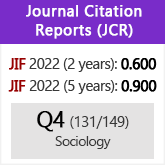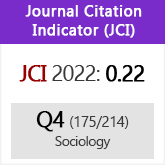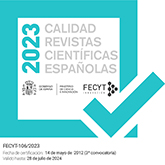Response cards. Are they necessary for correctly filling in a questionnaire?
DOI:
https://doi.org/10.3989/ris.2012.12.05Keywords:
Face to Face Survey, Interviewer, Item Non Response, Response Card Question, Response Order Effects Survey QualityAbstract
Using “response cards” in question surveys is unanimously approved by the research community. The fact that this represents an extra workload for the interviewer’s task explains why they sometimes are not used correctly. Despite this situation there is a paucity of literature on the influence of the response card on the respondent’s answers. The aim of this study is to deepen the analysis of how using these cards affect the quality of the survey’s responses. To do so, we start from the assumption that the cards —while complicating the interviewer’s task, result in significant improvements in the survey’s administration. For this purpose we will use a study with 23 card questions (question cards) by the Centro de Investigaciones Sociológicas, (the Spanish Centre for Sociological Research), and we will compare the answers of respondents that used cards with those who did not.
Downloads
References
Abraham, K. et al. 2006. "Nonresponse in the American Time Use survey: Who is missing from the data and how much does it matter?". Public Opinion Quarterly 70:676-703. http://dx.doi.org/10.1093/poq/nfl037
Azofra, M. J. 1999. Cuestionarios. Madrid: CIS (Colección Cuadernos Metodológicos 26).
Berdie, D. y John F. Anderson. 1974. Questionnaires: design and use. Metuchen, Nj: Scarerow.
Bishop, G. F. y A. Smith 2001. "Response-order effects and the early Gallup split-ballots". Public Opinion Quarterly 65:479-505. http://dx.doi.org/10.1086/323575
Bishop, G. F., A. Oldendick y A. Tuchfarber. 1983. "Effects of filter questions in Public Opinion surveys". Public Opinion Quarterly 47:528-546. http://dx.doi.org/10.1086/268810
Bourque, L. B. y V. A. Clark. 1992. Processing Data: The Survey Example, Sage University Paper Series on Quantitative Applications in the Social Sciences 07-085. Newbury Park, CA: SAGE.
Catania, J. A. et al. 1996. "Effects of Interviewer Gender, Interviewer Choice, and Item Wording of Responses to Questions Concerning Sexual Behavior". Public Opinion Quarterly 60:345-375. http://dx.doi.org/10.1086/297758
Cea D'Ancona, M. Á. 2002. Análisis Multivariable. Teoría y práctica en la investigación social. Madrid: Síntesis.
Centro de Investigaciones Sociológicas 2011. Barómetro de marzo. Madrid: CIS, estudio número 2864.
Centro de Investigaciones Sociológicas. 2011. Normas generales para la correcta aplicación del cuestionario. Madrid: CIS (documento no publicado).
Chang, L. y J. A. Krosnick. 2010. "Comparing oral interviewing with self-administered computerized questionnaires: an experiment". Public Opinion Quarterly 74:154-167. http://dx.doi.org/10.1093/poq/nfp090
Converse, J. M. 1964. "Predicting no opinion in the polls". Public Opinion Quarterly 40:515-530. http://dx.doi.org/10.1086/268337
Converse, J. M y S. Presser. 1986. "Survey Questions: handcrafting the standardized questionnaire". Sage University Paper series on Quantitative Applications in the Social Sciences 63. Beverly Hills y Londres: Sage.
De Leeuw, E. 2008. "Choosing the method of data collection". Pp. 113-135 en International Handbook of Survey Methodology, editado por Edith D. de Leeuw, Joop J. Hox y Don A. Dillman. Nueva York: Lawrence Erlbaum Associates y Asociación Europea de Metodología.
Díaz de Rada, V. 2001. Dise-o y elaboración de cuestionarios para la investigación comercial. Madrid: ESIC.
Díaz de Rada, V. y A. Nú-ez Villuendas. 2008. Estudio de las incidencias en la investigación mediante encuesta. Madrid: Centro de Investigaciones Sociológicas.
Dillman, Don A., G. Phelps, R. Tortora, K. Swift, J. Kohrell y J. Berck. 2001. "Response rate and measurement differences in mixed mode surveys using mail, telephone, interactive voice response and the Internet", Social and Economic Sciences Research Center, Washington State University, Department of Sociology. Washington http://survey.sesrc.wsu.edu/dillman/papers.htm.
Dillman, D. A., Jolene D. Smyth y M. C. Leah 2009. Internet, Mail and Mixed-Mode Surveys: The Tailored Design Method. Nueva York: Wiley.
Gilljam, M. y D. Granberg. 1993. "Should we take don't know for an answer?". Public Opinion Quarterly 57:348-357. http://dx.doi.org/10.1086/269380
Groves, R. M. y R. L. Kahn. 1979. Surveys by telephone: a national comparison with personal interviews. Orlando, FL.: Academic Press.
Heerwegh, D. 2009. "Mode differences between face-to-face and web surveys: An experimental investigation of data quality and social desirability effects". International Journal of Public Opinion Research 21:111-121. http://dx.doi.org/10.1093/ijpor/edn054
Heerwegh, D. y G. Loosveldt. 2008. "Face to face versus web surveying in a high internet coverage population". Public Opinion Quarterly 72:836-846. http://dx.doi.org/10.1093/poq/nfn045
Holbrook, A L., M. C. Green y M. C. Krosnick. 2003. "Telephone versus face-to-face interviewing of national probability samples with long questionnaires". Public Opinion Quarterly 67:79-125. http://dx.doi.org/10.1086/346010
Holbrook, A. L. y J. A. Krosnick. 1999. Response Order effects in telephone interviews. The impact of linguistic structure, and respondent ability, motivation and task difficulty. Paper presented at the annual conference of the American Association for Public Opinion Research, St. Petesburg Beach, FL.
Holbrook, A. L., J. A., Krosnick, D. Moore y R. Tourangeau. 2007. "Response order effects in dichotomous categorical questions presented orally: the impact of question and respondent attributes". Public Opinion Quarterly 71:325-348. http://dx.doi.org/10.1093/poq/nfm024
Johnson, T. et al. 2006. "Using Community-Level correlates to evaluate nonresponse effects in a telephone survey". Public Opinion Quarterly 70:704-719. http://dx.doi.org/10.1093/poq/nfl032
Keeter, S. et al. 2006. "Gauging the impact of growing nonresponse on estimates from a national RDD telephone survey". Public Opinion Quarterly 70:759-779. http://dx.doi.org/10.1093/poq/nfl035
Krosnick, J. A., A. L. Holbrook, M. K. Berent, R. T. Carson, W. M. Hanemann, R. J. Kopp, R. C. Mitchell, S. Presser, P. A. Ruud, V. Kerry Smith, W. R. Moody, M. C. Green y M. Conaway. 2002. "The Impact of 'No Opinion' Response Options on Data Quality: Non-Attitude Reduction or an Invitation to Satisfice?". Public Opinion Quarterly 66:371-403. http://dx.doi.org/10.1086/341394
Lynn, P. 1998. "Data collection mode effects on responses to attitudinal questions". Journal of Official Statistics 14:1-14.
Nicol, Adelheid A. M. y Penny M. Pexman. 1999. Presenting your findings: A practical guide for creating tables. Washington: American Phychological Association.
Oppenheim, A. N. 1992. Questionnaire design. Interviewing and attitude measurement. Londres: Pinter.
Petersen, T. 2008. "Split Ballots as an experimental approach to public opinion research". Pp. 322-329 en The SAGE Handbook of Public Opinion Research, editado por W. Donsbach y M. W. Traugott. Thousand-Oaks, LA: Sage.
Survey Research Laboratory, University of Illinois. 1994. General Training Manual for Face-to-Face Interviewers. Chicago, Illinois: Universidad de Illinois.
Tarnai, J. y D. A. Dillman. 1992. "Questionnaire context as a source of response differences in mail and telephone survey". Pp. 115-129 en Context effects in social and psychological research, editado por Norbert Schwarz y Seymour Sudman. Nueva York: Springer.
Schaeffer, N. C., J. Dykema y D. W. Maynard. 2010. "Interviewers and interviewing". Pp. 437-470 en Handbook of Survey Research, editado por Peter V. Marsden y James D. Wright. Bingley UK: Emerald Group Publishing Limited.
Schuman, H. y S. Presser. 1996. Questions and answers in attitudes surveys. Londres: Sage.
Downloads
Published
How to Cite
Issue
Section
License
Copyright (c) 2014 Consejo Superior de Investigaciones Científicas (CSIC)

This work is licensed under a Creative Commons Attribution 4.0 International License.
© CSIC. Manuscripts published in both the printed and online versions of this Journal are the property of Consejo Superior de Investigaciones Científicas, and quoting this source is a requirement for any partial or full reproduction.All contents of this electronic edition, except where otherwise noted, are distributed under a “Creative Commons Attribution 4.0 International” (CC BY 4.0) License. You may read here the basic information and the legal text of the license. The indication of the CC BY 4.0 License must be expressly stated in this way when necessary.
Self-archiving in repositories, personal webpages or similar, of any version other than the published by the Editor, is not allowed.

















